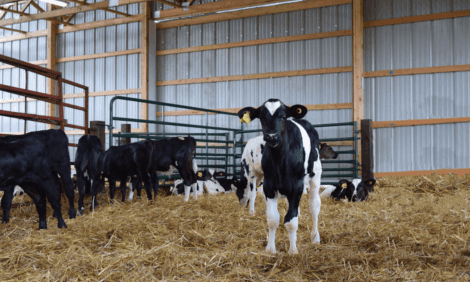



Allendale: Cattle is "Trade of the Year"
ANALYSIS - Rich Nelson, Allendale, Inc. director of research, said the US cattle market is "the trade of the year" and is bullish beef due to cattle liquidation and production issues, reports Sarah Mikesell, TheCattleSite senior editor."It is not grains, as far as a high confidence trade, it's in livestock, because you don't have to guess yields. This is a situation we already have proof is developing. And the market hasn't fully priced it in yet," said Rich Nelson, in late January at the Allendale Ag Leaders Outlook Conference.
Worst Liquidation Since the '80s
As a percentage of the total cow herd, slaughter rate reached 12.5 per cent in 2011. The cattle industry experienced the worst liquidation in 2011 that the US has seen since 1985-1986.
"Beef has actually been liquidating since 2006," he said. "We have a serious loss in our beef production base. As a total cow herd, down 2.5 per cent may not sound like much, but it really is for the US cattle industry."
US Production Issues
The US has some issues on the production side that have caused this dramatic tighten of the cattle supply - the first being drought in US cattle areas.
"Five years out of the past six or seven years have been drought years in the cattle regions," he said. "This is a tough problem on the beef side. Even though consumers are asking for a little bit less beef each year, we have a serious problem in production."
Second, hay production acreage has seen a significant shift over to grain since 2008. From 2005 to 2010, the US lost six million acres of harvestable hay ground out of just over 60 million acres, so 10 per cent of hay ground was lost with the highest loss coming just last year.
"We lost four million acres going to grain in 2011," Nelson said. "How's that set us up for production if you're going to expand? There's no way you're going to get that hay ground back - not with grain prices where they're currently at."
For 2012, Nelson expects to see another million acre loss of hay ground.
A few positives on the production side include lower grain prices for 2012 and more widespread use of distiller's dried grains with solubles (DDGS) for feed.
"I'm not going to lay out the bearish situation that I normally would for cattle feeding," Nelson said. "It's not going to be as bad as you would assume with a supply crunch."
Expansion Timeline
"When you decide to expand in the beef industry, you hold young female heifers back in year one. You breed them in year two. They become born calves in year three," Nelson noted. "At a minimum, you have a three-year lag between the decision to expand, and when that expansion actually hits the market."
So if expansion starts right now, there will still be lower beef production in 2012. It's also guaranteed lower 2013. And it's lower again in 2014. At a minimum, the industry won't see extra beef until 2015. So expect to see year-over-year declines in beef production played out.
"Last year at this conference, we were moderately bullish for 2011, but said the real issue was 2012 and beyond when prices would tighten," Nelson said. "Even though it sounded outlandish, it surpassed what we expected at the time - this massive liquidation and drop in beef production."
Cattle Supply Deficit
In July, the industry pushed a lot of young 300 to 400 pound calves into the feedlot, giving the US higher cattle on feed right now. However, once the market works through those cattle, Nelson said the industry has decimated the available calf-feeder supply for placements, having placed an extra 4 per cent in this time, when there was actually fewer to place.
"There will be months in the next six months with as much as a 10 per cent drop in placements on a month-to-month basis," he said. "While we do have beef production, it's supposed to be a little higher right now. If you break down the current slaughter of cattle, it's actually extra cows slaughtered. If you look at actual feedlot-based slaughtered steers and heifers, they're down 2 to 4 per cent. The total slaughters may be even or a little less than last year because we've got a bunch of cows. The actual feedlot-style beef, which is what the packers are paying for, is actually down."
Nelson said the continued losses in placements will set the US up for a big deficit in meat production, hitting the packing plant in the second half of this year. Beef production numbers may not be tight yet, but for the second half of the year, this developing problem will show up in prices. And there's evidence right now at the sale barn.
"We have absolute proof that this available cattle and feeders supply issue is going on right now," he said. "In a few months, it's going to hit the fat cattle market and last through the remainder of 2012. This is significant for the cattle industry. Plus, it's even worse than we thought it would be."
Looking forward to 2013 and 2014, it's the same situation - expect higher prices based on the live animal, which will not circulate wholly into the wholesale beef end - because this is a supply crunch.
"This is not a demand hole, where wholesale beef is leading; this is a supply crunch with cash cattle leading," he said. "This is going to stick with us for the next two years."



